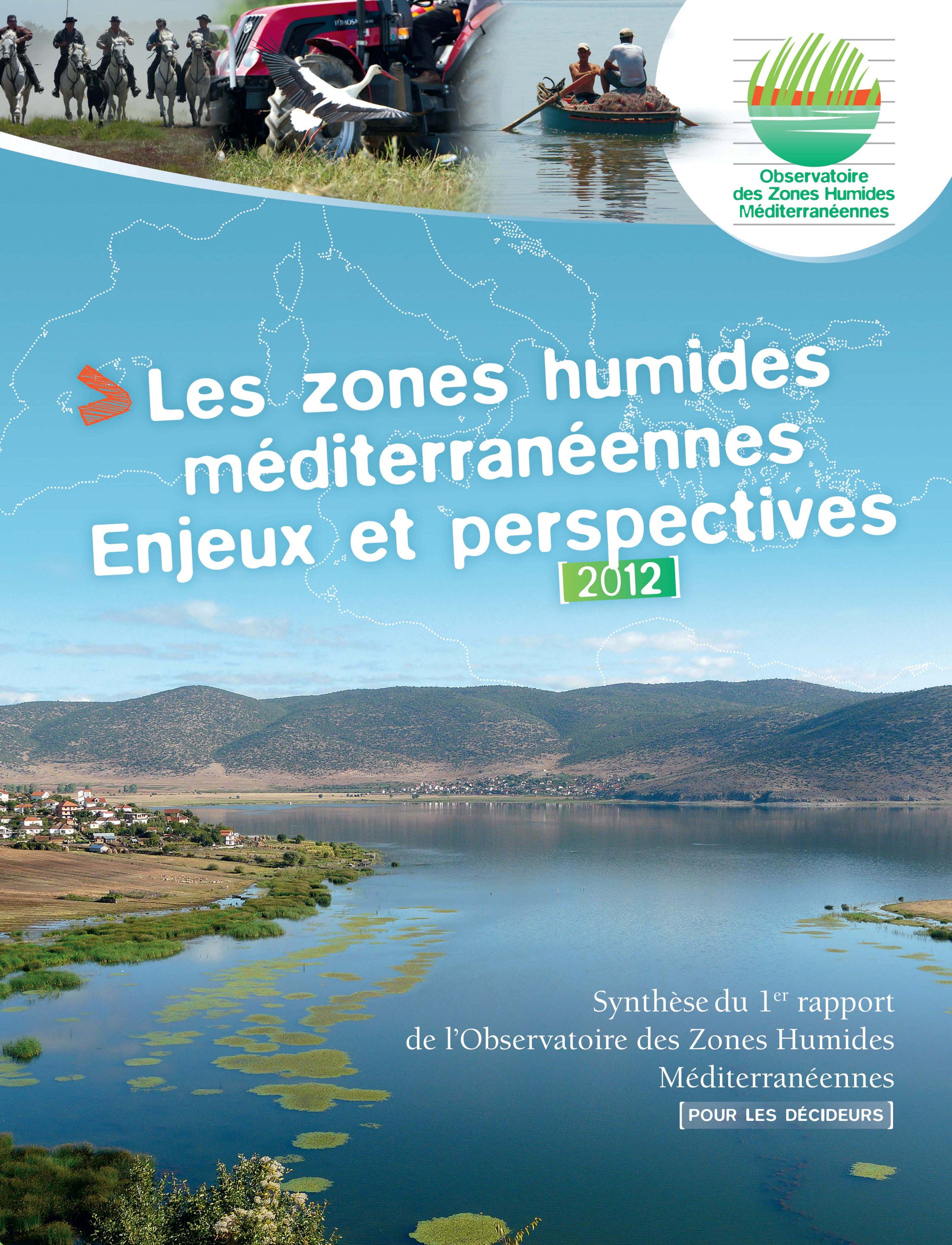The Mediterranean Wetlands Observatory’s (MWO) first report
The Mediterranean Wetlands Observatory, which is coordinated by the Tour du Valat, was created in 2008 within the framework of the MedWet initiative. Its analysis especially focuses on 25 indicators relating to wetlands biodiversity, the ecological services they provide, the pressures they are facing, and the actions taken by society to conserve and manage them. Seventeen indicators were developed and evaluated in this first report.
 The key results of this analysis of the situation in Mediterranean wetlands are as follows:
The key results of this analysis of the situation in Mediterranean wetlands are as follows:
Wetlands have continued decreasing in size
It is estimated that wetlands have lost more than 50% of their surface area in the Mediterranean region in the 20th century. Despite the fact that the losses are reducing within the European countries located in the Mediterranean basin, the downward trend is continuing today.
Biodiversity: contrasting trends in the Western and Eastern Mediterranean regions
The Living Planet Index shows that vertebrate populations have stabilised; however, this is due to the compilation of of contrasting trends. Waterbird populations are faring well, particularly in the western part of the Mediterranean basin. Other groups such as reptiles, amphibians, and fish, have experienced an overall drop of more than 40% in Mediterranean wetlands since 1970.
Very strong and growing pressure on water resources
The Mediterranean basin is one of the regions in the world that is the most highly exposed to a water deficit, with 7% of the world population and only 3% of overall freshwater resources. More than 60% of the ‘water poor’ population in the world is concentrated in this area, particularly in the southern part of the basin.
Water quality is improving…
Generally speaking, water quality has improved in Europe since the 1980s, particularly for nutrients and heavy metals. However, there is not adequate information on other pollutants, such as pesticides, and the other regions within the Mediterranean basin have not been adequately monitored.
However the quantity is decreasing!
The quantity of water available for the environment and wetlands has been decreasing, principally in the South and the East. Stream flows have been profoundly affected by the amounts of water drawn and the dams built on the rivers. The overexploitation of aquifers is worrying in the arid zones of the Southern Mediterranean countries.
Multiple causes of degradation
Demographic growth, current economic development models, governance, the importance of wetlands in the political agenda, and the level of enforcement of environmental laws are the principal causes explaining the profound changes affecting wetlands.
Although agriculture is the sector that has the greatest impact on wetlands and water, urbanisation, public infrastructure, and tourism have been exerting growing pressure.
The changes in wetlands have an impact on human well-being
Wetlands provide many services for humans still not recognized, in particular the regulatory services such as water purification and flood-risk mitigation. In addition, politicians and socio-economic stakeholders are still not very familiar with the concept of ecological services and do not include them in their political agendas especially in countries outside the European Union.
Possible responses and prospects for action
Beyond its pessimistic outlook, the report provides prospects for action by proposing the following recommendations for saving wetlands and maintaining the advantages generated by them for future generations:
- Formulating and implementing more effective policies and legal frameworks in order to halt the ongoing loss of wetlands and the degradation and homogenisation of their biodiversity;
- Getting all stakeholders involved in wetland protection programmes from political decision makers to the civil society, the private sector, and development agencies;
- Improving the process for listing Ramsar sites, the protective measures, and the implementation of management plans;
- Promoting conservation in non-protected areas by actively participating in national and local territorial planning schemes;
- Improving the wise management of wetlands to ensure that clean water will be available in the long term for all Mediterranean countries.
This is a two-volume report. Volume one, which is technical and intended for the scientific community, describes the method used to monitor the seventeen indicators, and provides the specific results. Volume two, which is more concise, offers a more overall analysis, and is intended for decision makers.
The two volumes will be officially presented at the International Symposium on Water and Wetlands in the Mediterranean, which will take place in Agadir (Morocco), February 6 to 8, 2012 (see Calendar).
The results and reports will also be available soon on the MWO website: http://www.medwetlands-obs.org/.